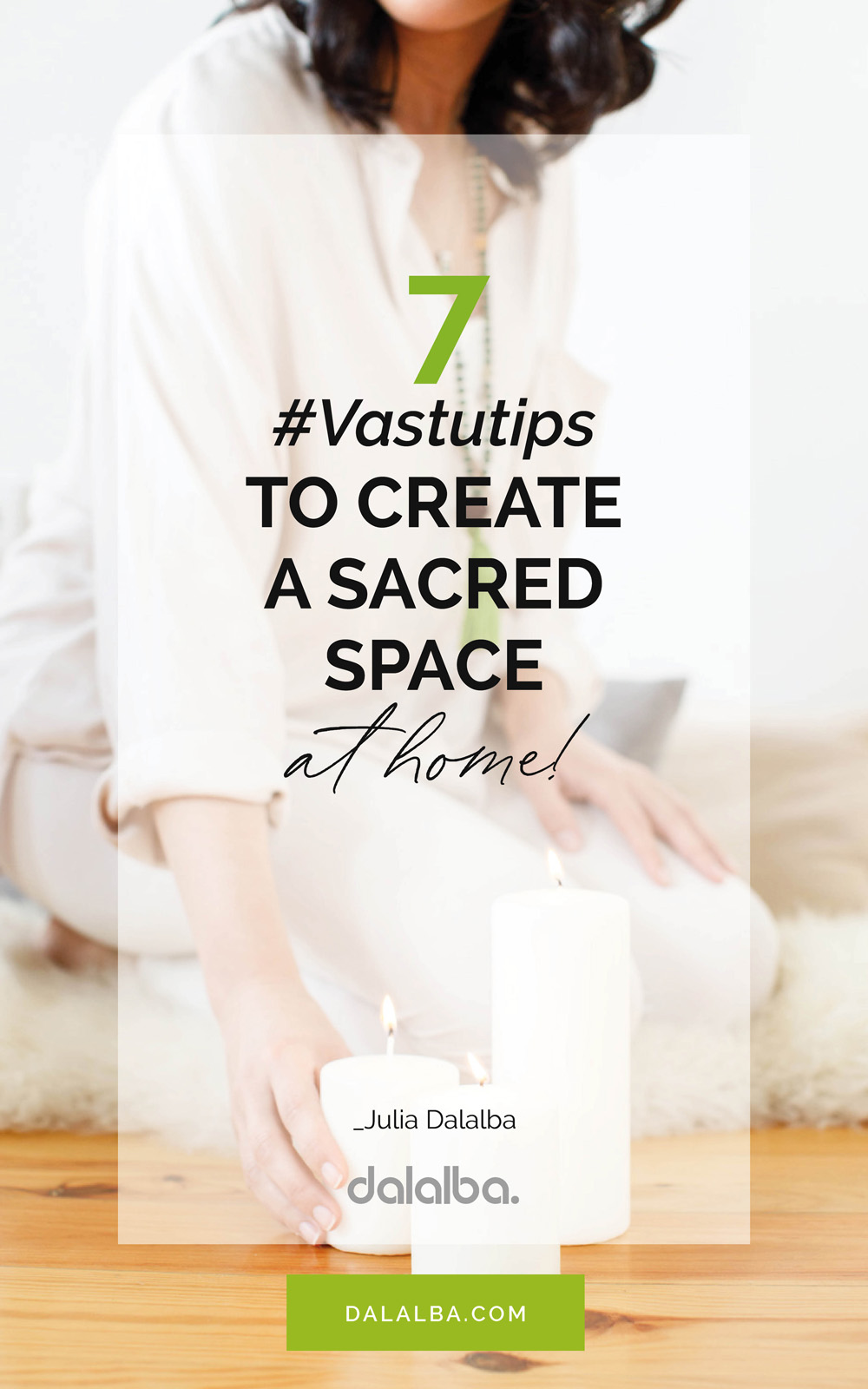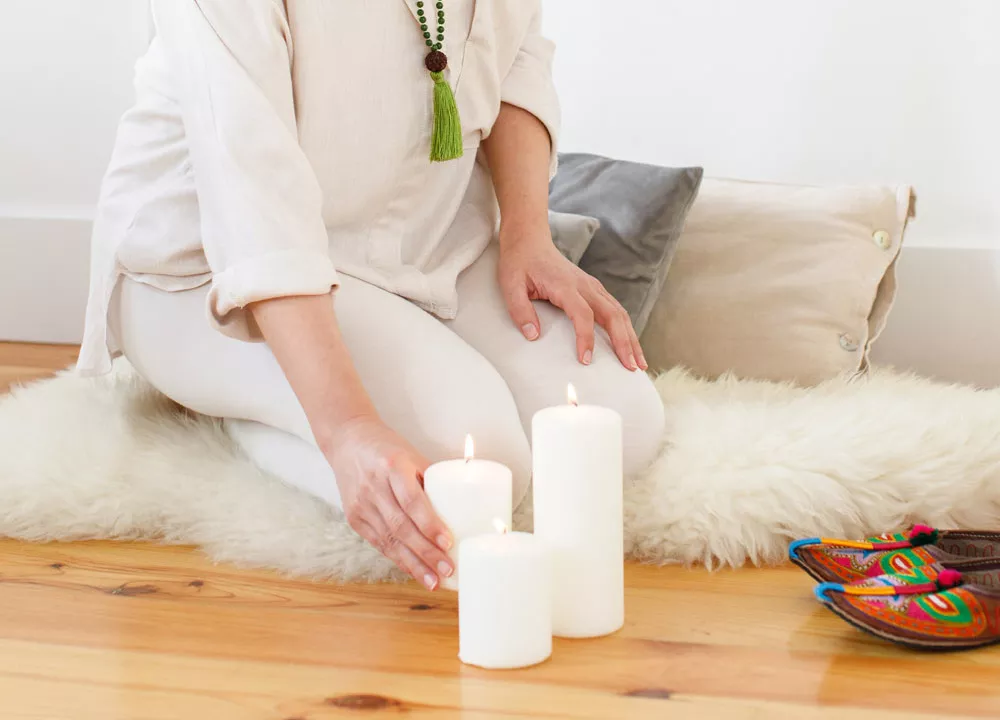Vastu tips to create a sacred space at home
When I started to meditate, almost 10 years ago, I was recommended to create a sacred space at home for this practice. Over time, I realized how much this influences your yoga practice, meditation and concentration. It really helps to have a proper space dedicated to this, like your own “cave” so that’s why I wanted to give you some Vastu tips to create a sacred space in your home.
I’ve been wanting to write a post about this for a long time and finally here I am! In this post, I offer you seven basic tips to keep in mind so that you can create a that little corner of well-being and reconnection with your Self. So, here we go!
1. The best location
According to Vastu, the ideal location for a sacred space in which to meditate, be alone with yourself, engage in contemplation, practice yoga or creative activities that demand inspiration, is the Northeast corner of your home (in the Northern Hemisphere) and Southeast in the Southern Hemisphere).
If for whatever reason this is not possible, then try to find a quiet place where you feel comfortable and no one can interrupt you. It can even be a corner of your bedroom or attic, and if you have doubts, use your intuition! Intuition never fails.
2. Order and cleanliness
Order and cleanliness is essential to create a sacred space. And, in terms of order, I mean clearing the clutter, getting rid of lots of things that drain your energy: let go broken objects, things that you no longer use, don’t want or simply no longer vibrate with you. Clear it and clean it consciously, so that the energy flows better.
It’s easier said than done, I know. It’s very common to feel attached to our belongings, facing difficulties to let them go: “What if I need it again?”, “This reminds me of …”, “My husband would kill me if I get rid of this …” and so on. Many thoughts and excuses circulate through our mind every time we want to put our house in order while seeking more spaciousness.
It’s about keeping the essence, only keep what you need and makes you vibrate, what spark beauty and joy you, giving up everything else. It’s worth doing it! Energetically, it often brings a sense of lightness, feeling like a big weight has been lifted off your shoulders and then, everything flows better.
3. Take care of it, with love
Once you have selected the furniture and objects that will be part of that sacred space, treat them with great love and care.
The rule of Saint Benedict, the monastic rule that Saint Benedict of Nursia wrote in the early 6th century for Catholics, invites all monks and nuns to treat each object in the monastery as if they were sacred altar vessels of the altar.
And the idea is to transfer that idea to your space, that you also treat the furniture and the objects as sacred pieces, taking care of them with love, dignifying them.

4. Create an altar
The altar is a very significant element within a sacred space, it helps you to orient yourself and be focus in one direction. According to the science of Yoga, the best orientation to meditate is towards North or East. Vastu also recommends that orientation to work because it energetically aligns you with your spine, helping you to be more centred and inspired.
And what’s the most important thing about an altar? Apart from the orientation, the elements that constitute it also play a significant role in it. There are quite a few parameters to take into account so I recommend you take a look at this post on how to create a good altar with Vastu Shastra.
5. Use natural materials and textures
Always choose natural materials (wood, natural fabrics such as wool, linen, cotton … etc) because they are biodegradable, more durable, free of toxic and harmful chemicals, they breathe better avoiding condensation and offer a greater sense of connection with nature.
If your intention is to use this space for yoga and meditation, my recommendation is, in terms of interior design, to place 100% silk or wool rugs on the floor, such as Killims.
Why? Well, there are subtle currents in the earth’s magnetic field (different from the force of gravity) that pull the energy of your body downwards while yoga tries to raise your energy upwards. Thus, Swami Kriyananda comments in his book “Raja Yoga” that yogis recommend to place an insulation against this downward pull of earth currents while meditating on a deerskin or woollen blanket. And for a greater insulation, cover it with silk cloth.
6. The choice of colour
As the saying goes… for taste colours, right? Many people ask me about the right use of colours in Vastu. And it’s a complex subject that changes according to the solar, lunar and earth time, so the space can align your energy colour field.
Vastu considers that we are beings of light, and therefore the correct colour order of our light field should follow the order of the rainbow and/or the chakras.
When there is an imbalance in this order, that’s when a special predilection for a specific colour comes up. And then, it arises the need to use “that favorite color” because, unconsciously, you will tend to look outside what you need to correct inside.
And if the predilection is white, that’s a good sign that the alignment of your colour field is aligned because the sum of the 7 light colours is white.
And after explaining you this, you might be wondering: okay, so what colour would be the most appropriate?
Well, my recommendation is white as a base background. Then, you can combine it with textiles of brighter tones if you have a predilection for a particular colour. The tones that provide the greatest sense of peace and well-being are pastel tones and light green. If you’re seeking to get a calming atmosphere, you can have a look to The Best Calming Paint Colors For A Relaxing Home Interior where I give my tips.
7. Take care of its energy
It’s important to take care of this space on a regular basis, cleaning it while practicing japa, changing things regularly to move the energy, making offerings with fresh flowers, burning incense or incense to energetically clean the space, etc.
And if you want to protect the energy of this space from external agents such as electromagnetic radiation or other kind of negative vibration, I recommend placing 4 black tourmalines (one in each corner of the room) to create a kind of protective shield. Tourmalines will help purify and protect that space, (although you should also clean these stones regularly).
And if for example, you use this space for the practice of yoga and meditation, in a few months it will develop an atmosphere of peace that will help you deepen your practice even more. Places and spaces develop their own vibration depending on the activity that takes place in them.
And these are the seven basic Vastu tips that I can give you to create a sacred space in your home so it helps you reconnect with your Self!
If you have any questions, you can leave me your comment below and I will respond as soon as possible.
Much love to you and to your sacred space!
Many blessings
Julia

